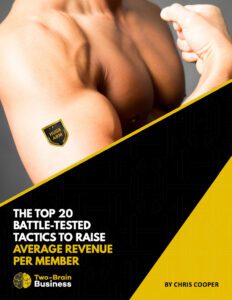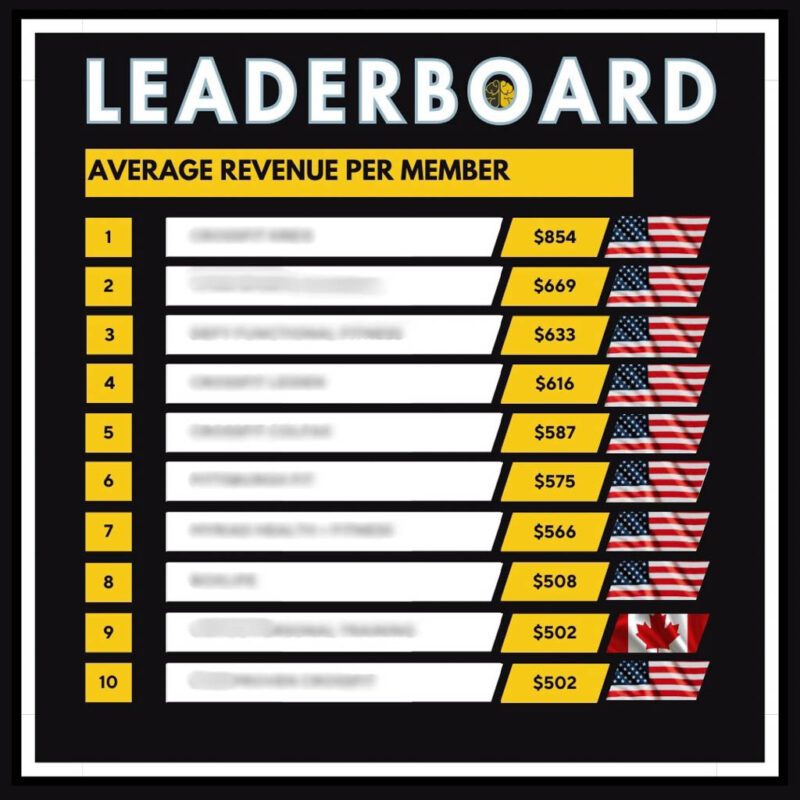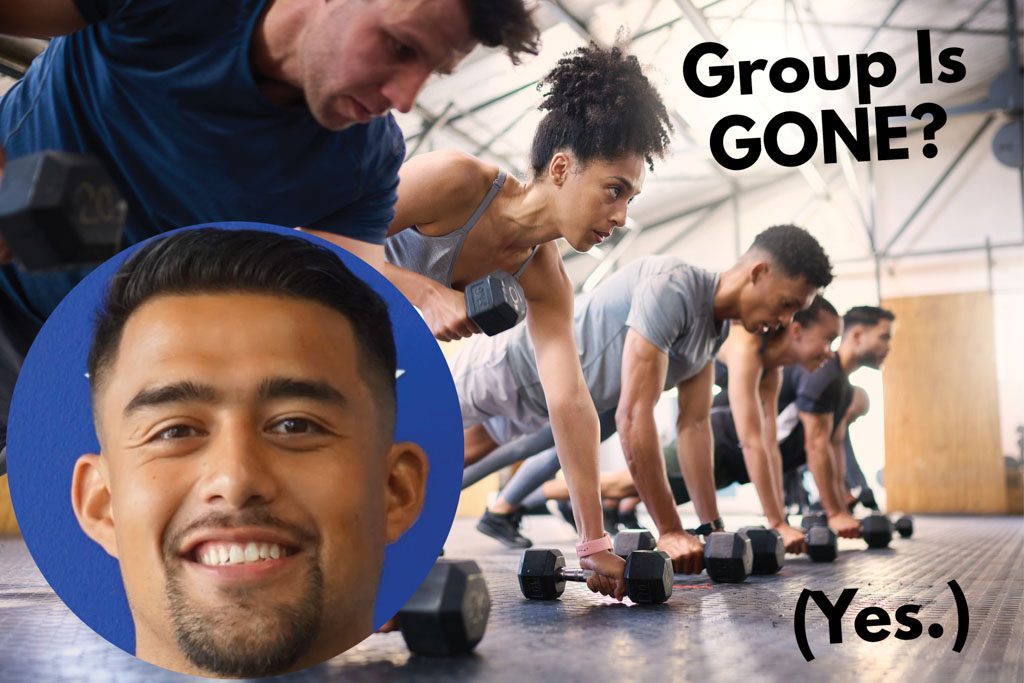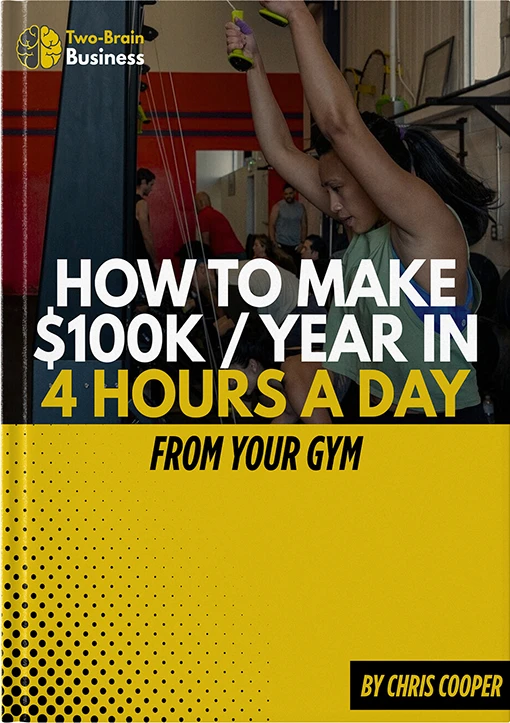Is your lowest tier of membership dragging your business down?
Is it producing results for clients?
What would happen if you got rid of this option?
These are fascinating questions, and the answers can dramatically change a gym business.
Kevin Munoz of Peak PT asked these questions together with his Two-Brain mentor, Peter Brasovan.
Here’s what happened.

In Chris Cooper’s guide “The Top 20 Battle-Tested Tactics to Raise Average Revenue Per Member,” he listed “cut clients below ARM” as a creative option.

It’s a bold tactic that requires careful analysis of your business model. Coop himself made the move back in the day by cutting his access-only option in 2012.
“We decreased staffing costs for open gym time, decreased cleaning costs and upgraded a few members who stuck around long term because they were getting real coaching,” Coop recalled.
Later, he got rid of his eight-times-a-month membership: “A half-dozen clients left. The rest upgraded.”
At Peak PT, Kevin’s ARM was around $300—which is a very good number. But he wanted to be great, so he worked with his mentor to make a plan to evolve:
- Install an A+ on-ramp.
- Raise rates.
- Create a pricing binder.
- Sell with the Prescriptive Model.
- Cut the lowest service tier.
These are all strong moves, but let’s take a closer look at the last one, which requires a precise analysis of a gym’s business model.
Group Is Gone at Peak PT
Group training “was our biggest driver in terms of head count,” Kevin said. “So a lot of people were into that program. We had to close down the gym basically entirely because so many people were going to that class. It was the lowest paying and highest demand service level, so the margin on it wasn’t very high.”
And here’s the kicker: “People weren’t getting the best results, so they wouldn’t stay very long.”
Recall Two-Brain’s Five Pillars of Retention: results, fame, compatibility, consistency and referrals.
So if a low-value service isn’t helping clients accomplish their goals—if they don’t get results—that service is actually increasing churn, which puts pressure on marketing systems and onboarding staff.

Still, cutting a service used by a large number of members is scary.
To pull it off, you must adjust your business model and ensure your remaining offerings produce the metrics you need to generate profit.
Could you say goodbye to 30 people and come out stronger?
Kevin took the plunge and whacked his group program after:
- Reviewing his metrics.
- Adjusting his semi-private and one-on-one offerings to add value.
- Greasing up his marketing funnels.
- Supercharging his sales process.
- Ensuring his on-ramp would encourage long-term membership.
- Creating a clear plan to pitch his high-value programs to existing group clients.
The result: Kevin bounced back from his pruning to have his strongest year ever, and he made Two-Brain’s Top 10 leaderboard for ARM, which runs from $502 to $854.

Munoz is also relying on steady referrals from happy, high-value clients who are getting great results.
“Referrals are the biggest thing,” Kevin said. “If you get your ideal person, they probably hang out with their ideal people. You get them results, you show them the value, you tend to get a lot of referral business.”
Behold another Pillar of Retention: Satisfied clients who refer friends stay longer because they are invested in that friend’s success.
It’s clear Kevin’s snowball is rolling downhill because he made the right move at the right time for the right reason: He’s got very high-value clients who stay a long time and bring their friends to train, too.
Your Business Model
All this isn’t to suggest you should immediately cut your lowest tier of service.
Kevin runs a highly systemized, carefully constructed business that’s fueled by a precise four-funnel marketing plan designed to connect with a clearly defined avatar. He’s locked down the fundamentals and now has the freedom to work on optimizing his business with the help of a mentor.
“Tighten all these bolts so you have a working backbone, and then from there you can get creative with the things that you do in the programs that you launch,” Kevin said.
It’s great advice. He built a rock-solid foundation with the help of a mentor and then made a big move from a position of strength—and he won big time.
Should you make a similar move?
A mentor can tell you after analyzing your metrics and digging into your business.
Two-Brain mentors have a host of battle-tested ARM-boosting tactics they can use to help you earn more, and they will tell you exactly which one to use right now.
Maybe your service package is dialed in but your rates are too low. Or maybe you need to add PT instead of cutting a service tier. Or maybe your business would thrive with the addition of semi-private training or habits coaching.
A mentor can help you pick the right tactic—and the right tactic at the right time can launch your business skyward.
Just ask Kevin.
“After working with a couple of agencies, it seemed like Two-Brain was the most tactical, strategic, value-providing mentorship program out there. … We went with Two-Brain Business, and the impact was immediate.”
To talk to an expert about improving your gym business fast, book a call here.

